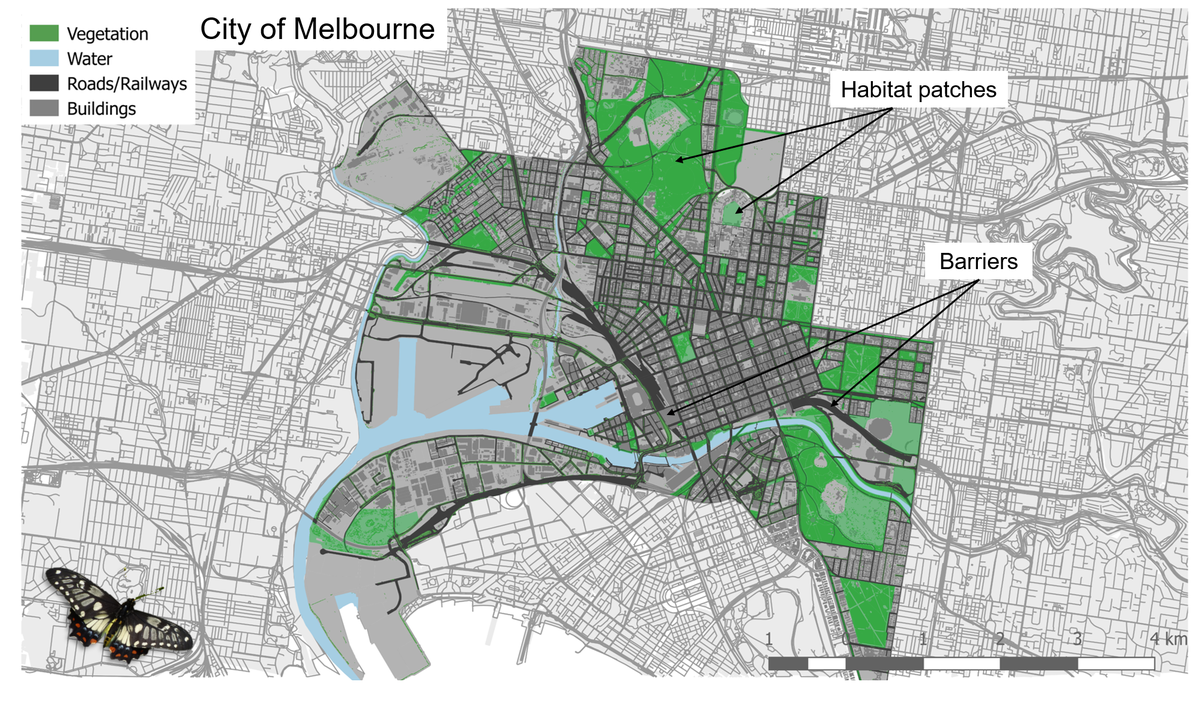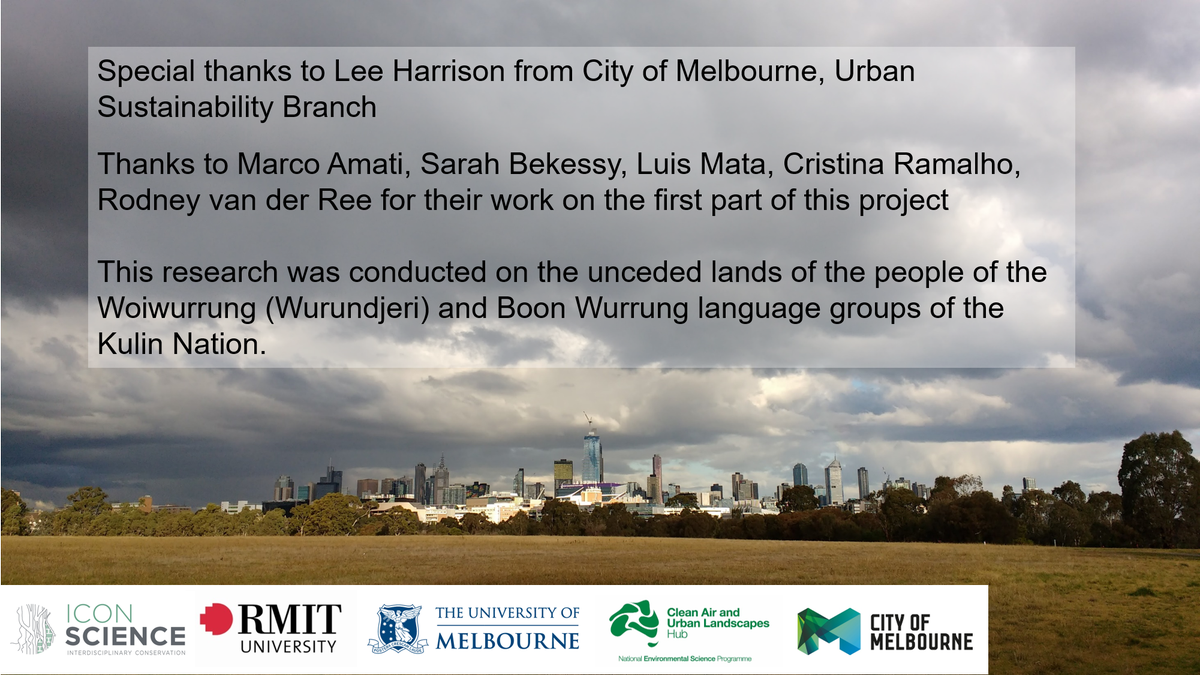Biodiverse cities = healthy cities but how do we encourage wildlife to thrive?
#urbanEcology can help us decide where to prioritise resources for nature.🌿
In 2018 we showed how @cityofmelbourne can use #connectivity theory as a planning tool: tinyurl.com/y5av3uyw

All animals need to move for the same reasons as people🍔🏕️💑
But resources are fragmented across city-scapes, with barriers in between.
🗾
Ecological connectivity quantifies how easy it is for an animal to move around the landscape & where to place new connections.

We use Spanowicz & Jaeger 2019 method to quantify the degree of habitat fragmentation across a landscape.
Habitat patches are connected if they are within a reasonable distance for that animal to cross, AND are not separated by a barrier. 🛣️🏫
tinyurl.com/y4kux8f3
City of Melbourne asked us to help ID roads to target their 🌿👷♀️🌱💧🌺💦👩🌾🌳🪴
We implemented the connectivity measurement in #RStats so we could run the analysis thousands of times. We modelled removing individual road segments & recorded how connectivity changed.
We did this for seven species groups, including 🐦🦎🦇🦜🦋🐸
We were able to produce a ranking system for the city's road network, identifying which roads could have the biggest impact on 📈 connectivity if the road no longer acted as a barriers to animal movement.

#RStats 📦"UrbanConnect" is on its way - check my Github for updates!
github.com/hollylkirk/urb…
Here's a link to first @cityofmelbourne connectivity report
tinyurl.com/y6ganl7t



